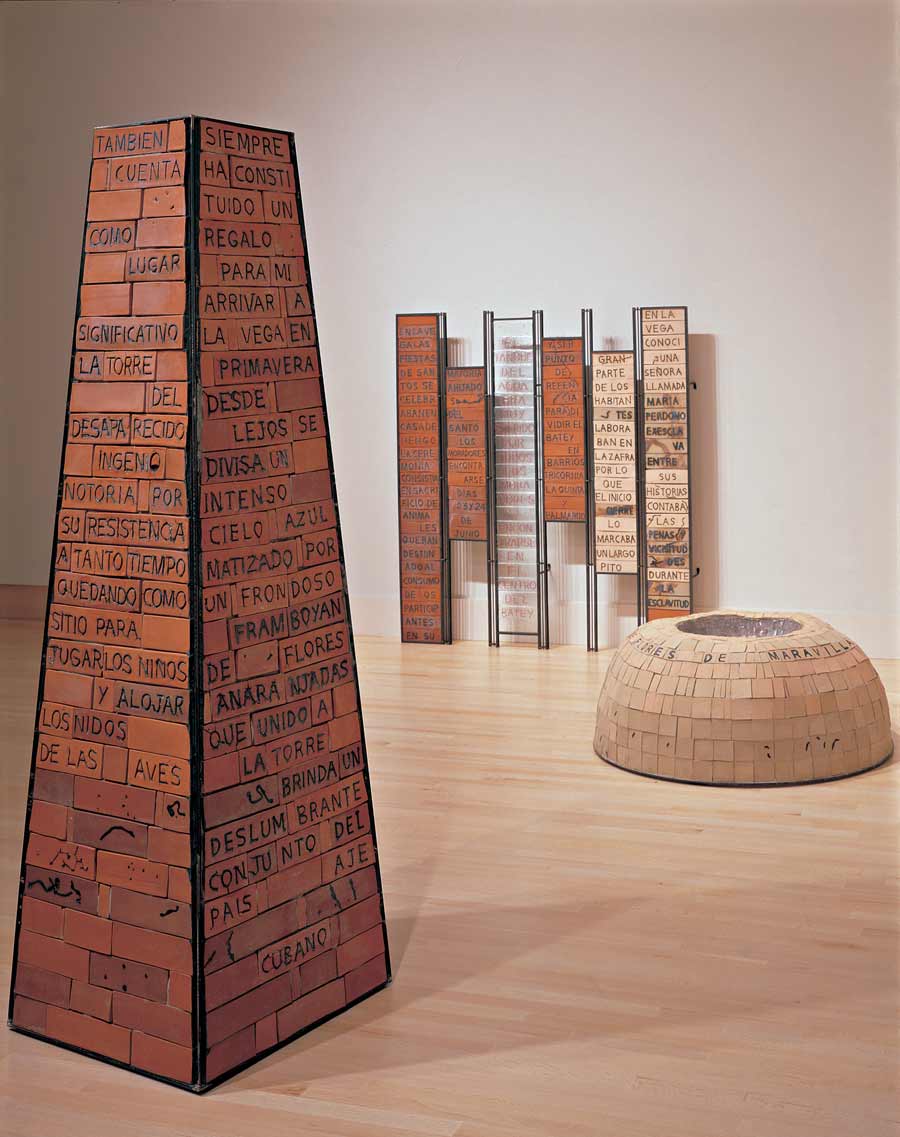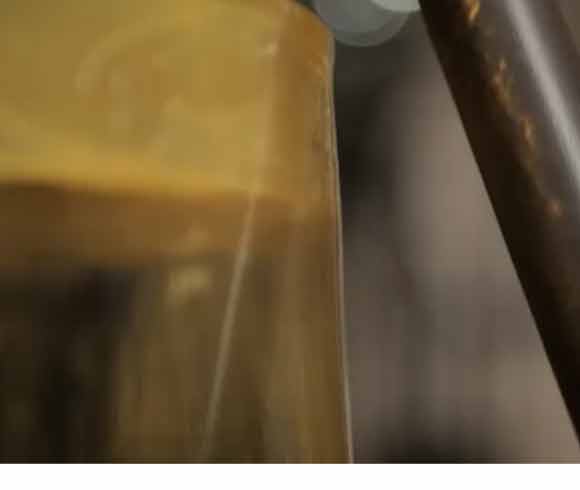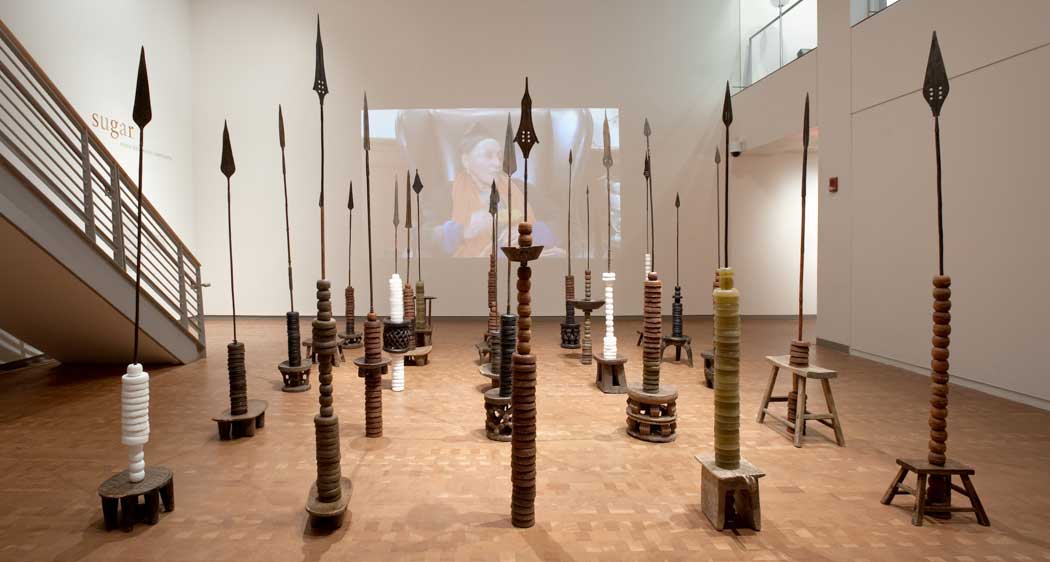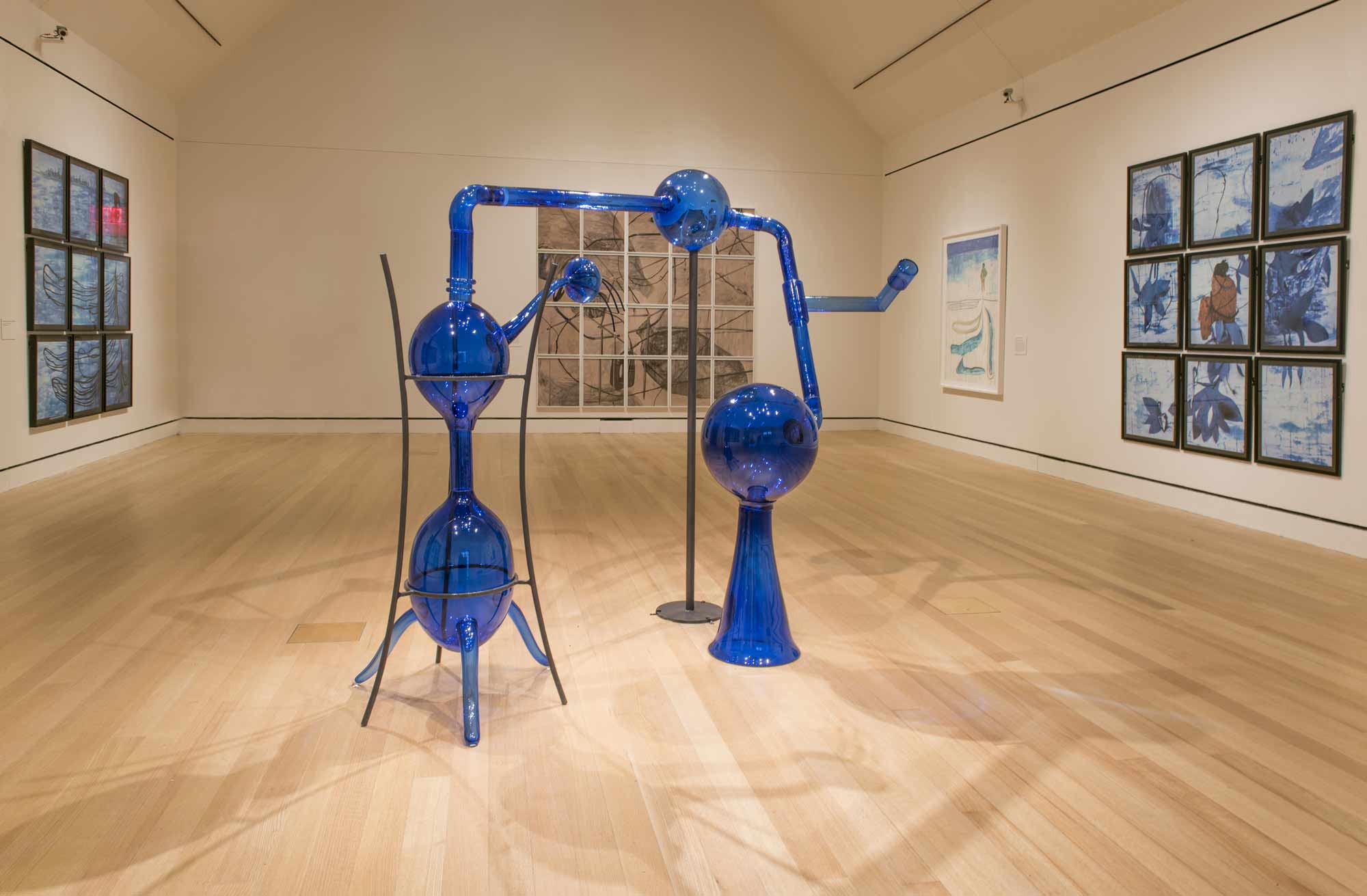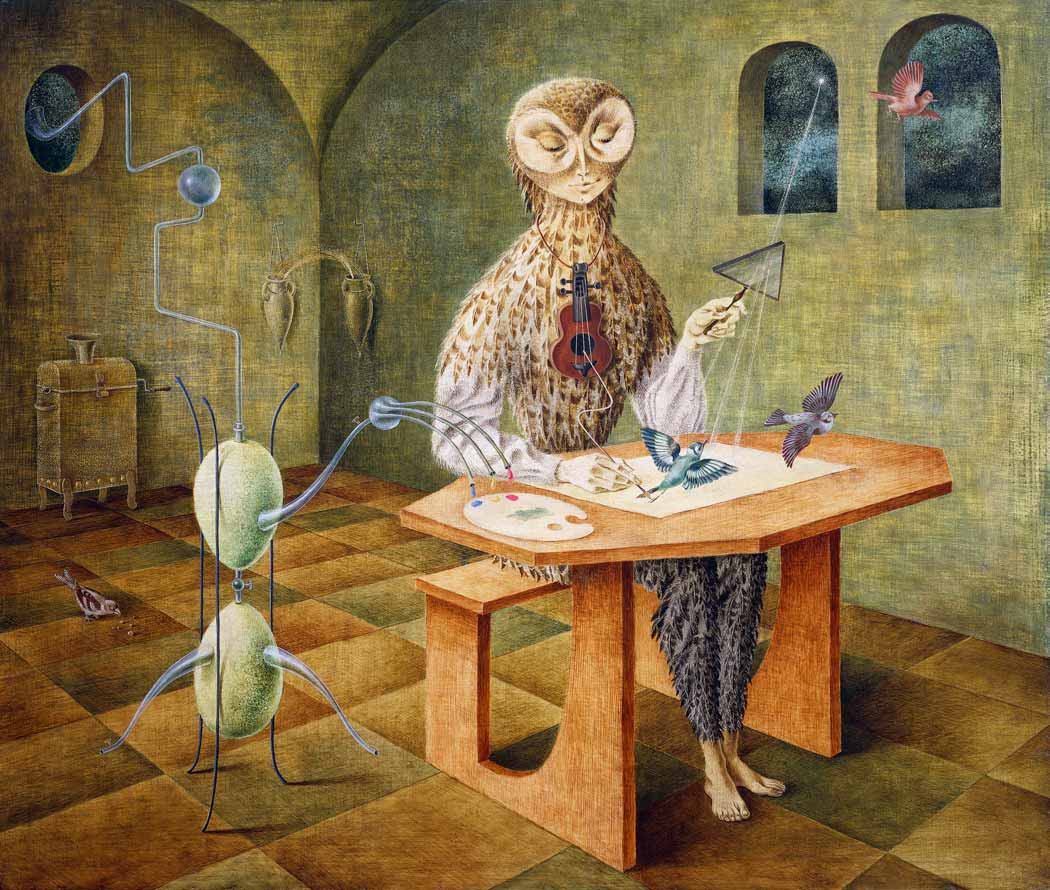This working and reworking of intense themes across multiple pieces is a distinctive characteristic of Campos-Pons's artistic practice.
In Alchemy of the Soul, Elixir for the Spirits, components reminiscent of steel crossbeams and girders meant, in their original context, to provide load-bearing stability, are connected with bulbous, almost voluptuous forms, some vaguely suggestive of an intestinal tract. Elevated silos shaped like the reservoir containers that hold sugar or rum during industrial production are supported by delicate curved legs, calling to mind the limbs of animals or insects. While the majority of the visual references are industrial, Campos-Pons does not hesitate to utilize organic and corporeal imagery as well in order to achieve the visual impact she seeks.
These sculptural units are spaced across the gallery, allowing the viewer to walk among and around them, observing each aspect of Campos-Pons's creation in the way one would consider freestanding sculpture. Flowing through the pipes and reservoirs of one unit is a clear brown liquid, which lends the entire gallery a faint, sweet rum scent. Among the most striking features of the installation is the material the artist employed to create the individual structures: these are not the rusted metal girders, masonry, pipes, and rivets of the original Cuban mills, but instead are forms made largely out of colored glass, some of them glowing blue, some brown, and some an ochre yellow. Just as the rum-like fluid flows through the glass structure, so too does a soundtrack that contextualizes the piece flow through the gallery.
In Neil Leonard's eight-channel soundscape, voices and notes rise up, reverberate, and dissolve in the gallery. The ambient sounds of the fields surrounding Cuban sugar mills are heard in the background. The clave of the rumba group Los Muñequitos de Matanzas fades into the distinct resonance of rum moving inside a glass vessel. "The sound of Alchemy of the Soul amplifies currents between Cuba and the U.S. and brings sonic recognition to the experiences," describes Leonard, "rais[ing] questions about what is distant/familiar, real/fictional, bitter/sweet, and what is the function of spirituality."
As implied by Leonard's observations, Alchemy of the Soul, Elixir for the Spirits is a work of multiple forms of reappropriation and recontextualization. First, the piece was designed to unveil the "cruel practice of slavery." Campos-Pons seeks to do so in a way that is poetic, abstracted, mirroring her own experience of the mills, offering, on one side, the wonder and beauty of shapes in space akin to her childhood exposure to the mill tower, and, on the other, referencing the demanding physical labor and hardship that was required to produce sugar, initially by slaves, and in subsequent generations, by poorly treated laborers.

Figure 24 | Bottle of raw sugar, about 1870, Matanzas, Cuba, glass and raw sugar, Peabody Essex Museum, gift of Mrs. Charles H.P. Copeland, 1969. © 2015 Peabody Essex Museum. Photography by Kathy Tarantola/PEM.
Another aspect of her reimagining relates more broadly to the maritime commerce that linked New England, West Africa, and the Caribbean. These locations were the points of the historic Triangle Trade—the trade route that connected the three regions and which encompasses Gilroy's conception of the black Atlantic. In the eighteenth and nineteenth centuries, sugar and molasses from Cuba and other parts of the West Indies were transported to New England, where they were distilled into rum (Figure 24). The profits from the sale of sugar were then used to purchase manufactured goods, such as cloth, trinkets, guns, and ammunition, which were shipped to West Africa. These goods were, in turn, sold or bartered for human cargo, the slaves that worked the sugar plantations and mills of Cuba. From the coast of Africa, slaves were transported on the Middle Passage, the third leg of the triangle, to their final destination in Cuba. The merchants and sea captains of New England were among those who became rich from the Triangle Trade.
These historic linkages connecting Cuba and New England make the Salem-based PEM a particularly appropriate site to inaugurate Alchemy of the Soul, Elixir for the Spirits. Slaves did not represent a material part of the trade activities of the Salem merchants who founded the East India Marine Society in 1799 (later to be known as PEM); however, Salem merchants did play a role in the Triangle Trade pattern that supported the plantation system in Cuba, sending dried salt cod to the West Indies, shipping wooden staves to make the casks which transported molasses, providing horses used in sugar mills (like the one in La Vega), and, ultimately, establishing a prominent market for the sugar and molasses such mills produced.
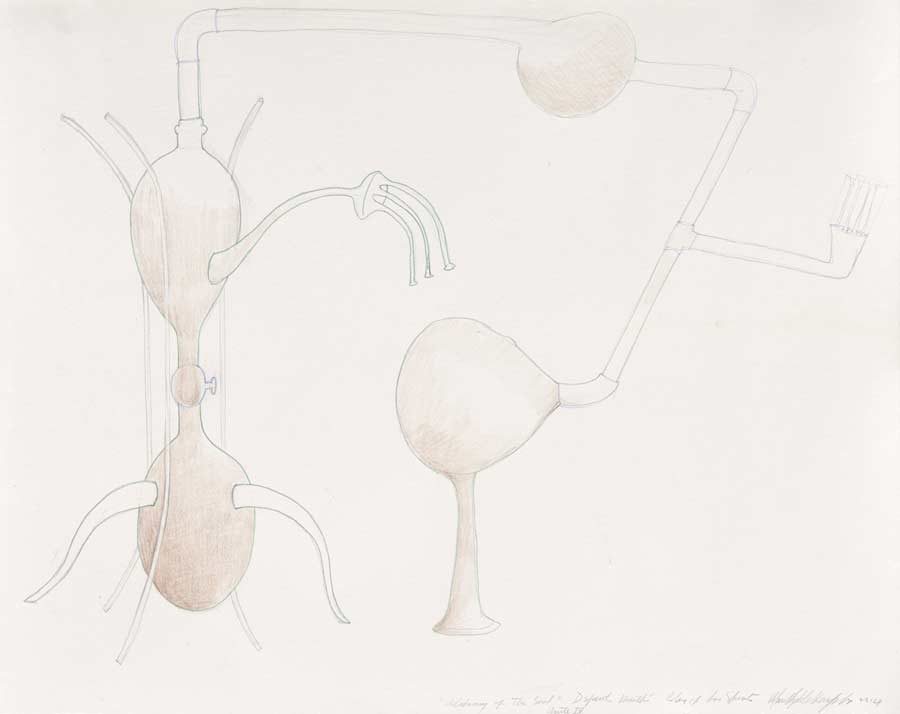
Figure 25 | Preliminary drawing for Alchemy of the Soul, Elixir for the Spirits, 2014, pencil on paper, 20 × 26 1/8 in. (50.8 × 66.4 cm), collection of the artist. Photography by Walter Silver/PEM.
While Alchemy of the Soul, Elixir for the Spirits is one of Campos-Pons's most recent works, it has been gestating in her mind for over twenty-five years, since her early days in the Boston area. Campos-Pons recalls doing her very first sketch for what would eventually become the piece in 1988, when she was a student at MassArt. The work has, she says, "been cocooning in my notebooks and in my dream chest" for many, many years (Figure 25). Alchemy of the Soul, Elixir for the Spirits, then, is both a reflection of a process drawn from memory and a seminal example of the artist's preoccupation with it: the materiality of memory, the distortion of memory, the fragility of memory, the vulnerability of memory. "What is constructed, what is real, what is past?" All of these questions Campos-Pons believes are tied up in the meaning of Alchemy of the Soul, Elixir for the Spirits and her effort to capture, in an abstracted way, the essence of sugar mills that are now in ruins and a sugar industry that is, itself, mostly a memory.
